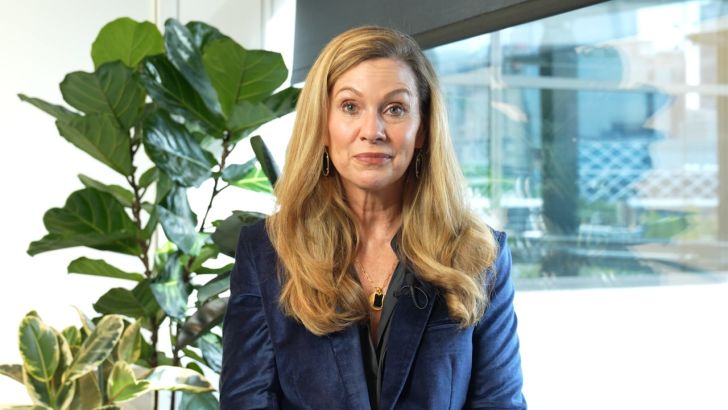Climate Authority Chair Can't Say When Power Prices Will Stop Rising Despite Renewable Claims
This piece is freely available to read. Become a paid subscriber today and help keep Mencari News financially afloat so that we can continue to pay our writers for their insight and expertise.
Today’s Article is brought to you by Empower your podcasting vision with a suite of creative solutions at your fingertips.
Climate Change Authority Chair Matt Keane repeatedly refused to provide a timeline for when electricity prices will stop increasing, deflecting questions about power company CEOs’ warnings of decade-long price rises during a tense Sky News interview that exposed the gap between government renewable energy claims and household bill reality.
The former NSW Liberal minister—now heading the independent climate advisory body—insisted renewable energy is “the cheapest form of electricity” but couldn’t specify when Australian households would actually see relief from power bills that have jumped 40% under Labor.
“When do they stop going up, Matt Keane? When do they stop going up?” Sky News host Andrew Clennell pressed repeatedly, as Keane deflected to generalized statements about rolling out renewables without committing to any timeframe.
“When we get on with the job of rolling out renewables at scale,” Keane responded, prompting Clennell to push back: “How many years does that take?”
The exchange highlights growing frustration among households facing sustained electricity cost increases despite three years of government promises that renewable energy would deliver cheaper power. Keane’s inability to provide concrete timelines contrasts sharply with his confident assertions about renewable cost advantages.
Truth matters. Quality journalism costs.
Your subscription to Mencari directly funds the investigative reporting our democracy needs. For less than a coffee per week, you enable our journalists to uncover stories that powerful interests would rather keep hidden. There is no corporate influence involved. No compromises. Just honest journalism when we need it most.
Not ready to be paid subscribe, but appreciate the newsletter ? Grab us a beer or snag the exclusive ad spot at the top of next week's newsletter.
Power Company CEOs Predict Decade of Increases
Keane’s evasiveness came after Clennell cited a recent Australian Energy Council report showing power company CEOs expect prices to continue rising for a decade due to the energy transition.
“We had power company CEOs tell... The Australian Energy Council did a report on their comments, and they were saying that because of the energy transition, prices will continue to rise for a decade,” Clennell said. “Do you accept that?”
Keane rejected the industry assessment, instead pointing to Australian Energy Market Commission (AEMC) analysis suggesting coordinated renewable rollout represents the cheapest modernization pathway. “The AEMC, the Australian Energy Market Commission, have very clearly said the cheapest way to modernise our electricity system is a coordinated rollout of renewables,” he said.
However, Keane acknowledged the transition period creates uncertainty: “This is a transitionary period that we’re going through. We’ll be going through it for the next period of time.”
What Is the Climate Change Authority?
The Climate Change Authority is an independent statutory body established in 2011 to provide expert advice to the Australian government on climate change policy, including emissions reduction targets and carbon budgeting. The Authority conducts research, reviews government climate policies, and makes recommendations on Australia’s climate response.
Matt Keane chairs the Authority after serving as NSW Liberal Treasurer and Energy Minister from 2019-2023. The body’s independence means it operates separately from ministerial direction, though it reports to the federal Environment and Energy ministers.
The Authority played a key role in developing Australia’s 43% emissions reduction target by 2030 and net-zero by 2050 commitments under the current Labor government.
The Renewable Cost Debate
Keane forcefully defended renewable energy economics against criticism from Gerard Holland of the Page Research Institute, who advised the Coalition on energy policy and argues coal remains the cheapest generation source.
“Well, it’s just rubbish. You should stop being dishonest with the Australian public,” Keane said when asked about Holland’s assessment. “We’re seeing the cost of renewable technology sinking like a stone, whether it be solar panels or wind turbines or batteries, and they’re only going to get cheaper.”
Keane blamed current electricity price increases on international fossil fuel costs rather than the transition itself. “One of the reasons we’re having more expensive electricity is because the price of coal at the international spot price is going up, as is the price of gas, as is the price of diesel,” he said.
However, industry executives tell a different story. Power company leaders cited in the Australian Energy Council analysis warned that substantial infrastructure investment required for the transition—including transmission lines, grid upgrades, and firming capacity—will drive sustained price increases regardless of falling renewable technology costs.
The AEMC Position
Keane repeatedly cited AEMC analysis to support his claims, though he acknowledged the commission emphasizes coordination is critical. “They’ve gone so far as to say that the coordinated rollout of renewables will see those energy price reductions as it’s done. But the biggest thing that will disturb those prices coming down is an uncoordinated or disorderly change,” he said.
The AEMC has warned that coal plant closures outpacing renewable and storage deployment would create supply shortfalls driving price spikes—a scenario some energy analysts fear is already unfolding as aging coal facilities shut down faster than anticipated.
NSW’s Eraring coal plant—Australia’s largest—is scheduled to close in 2027, two years earlier than originally planned. Victoria’s Yallourn facility shut in 2028, while Queensland’s aging coal fleet faces reliability challenges requiring emergency interventions to maintain supply.
Where Prices Stand Now
Australian households have experienced electricity price increases of approximately 40% since Labor took office in 2022, according to Keane’s acknowledgment during the interview—though he attributed this primarily to international fossil fuel price pressures rather than domestic policy.
Gas prices have similarly risen 40% over the same period, placing significant pressure on household budgets heading into summer when air conditioning demand peaks and again in winter when heating needs spike.
The government has implemented temporary electricity bill relief measures including $300 rebates for households and $325 for small businesses, though these one-time payments offset only a fraction of the sustained increases.
Energy affordability has become a dominant political issue ahead of the 2026 federal election, with the Coalition making power price relief central to its campaign messaging while Labor emphasizes its renewable transition will eventually deliver cheaper, more reliable energy.
What Happens Next
Keane’s refusal to provide concrete price reduction timelines leaves households without clarity on when relief might arrive, potentially undermining public support for the renewable transition if bills continue rising indefinitely.
The “transitionary period” Keane referenced could extend throughout the 2020s as coal plants close and renewable projects plus supporting infrastructure gradually come online—meaning Australian households may face continued electricity cost pressures for years regardless of which party holds government.
Industry analysts suggest realistic price stabilization depends on several factors beyond renewable deployment, including: successful transmission upgrades connecting new generation, adequate firming capacity from batteries and pumped hydro, and coordination between federal and state governments on grid planning.
The AEMC will release its next comprehensive electricity price outlook in early 2026, potentially providing more definitive guidance on when households can expect relief—though Keane’s evasiveness suggests even independent climate advisers lack confidence in near-term price reductions.
Sustaining Mencari Requires Your Support
Independent journalism costs money. Help us continue delivering in-depth investigations and unfiltered commentary on the world's real stories. Your financial contribution enables thorough investigative work and thoughtful analysis, all supported by a dedicated community committed to accuracy and transparency.
Subscribe today to unlock our full archive of investigative reporting and fearless analysis. Subscribing to independent media outlets represents more than just information consumption—it embodies a commitment to factual reporting.
As well as knowing you’re keeping Mencari (Australia) alive, you’ll also get:
Get breaking news AS IT HAPPENS - Gain instant access to our real-time coverage and analysis when major stories break, keeping you ahead of the curve
Unlock our COMPLETE content library - Enjoy unlimited access to every newsletter, podcast episode, and exclusive archive—all seamlessly available in your favorite podcast apps.
Join the conversation that matters - Be part of our vibrant community with full commenting privileges on all content, directly supporting The Evening Post (Australia)
Catch up on some of Mencari’s recent stories:
It only takes a minute to help us investigate fearlessly and expose lies and wrongdoing to hold power accountable. Thanks!








